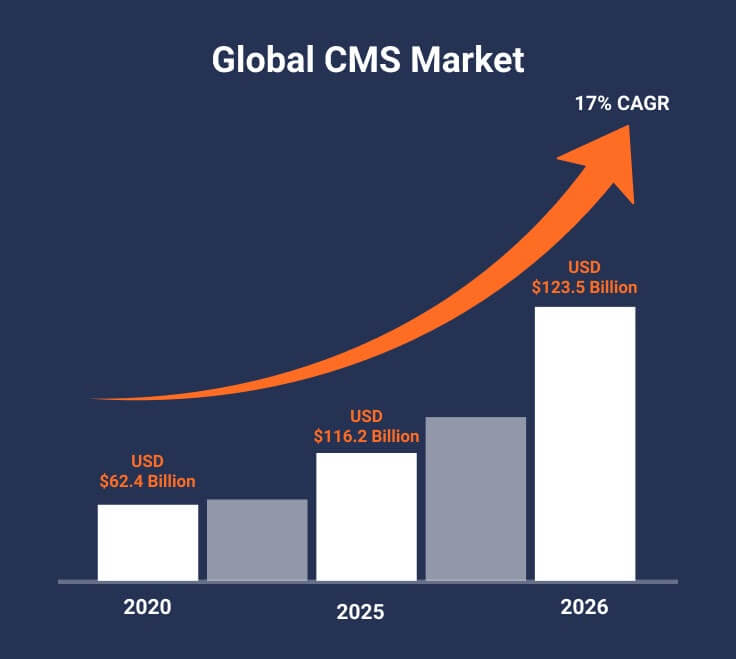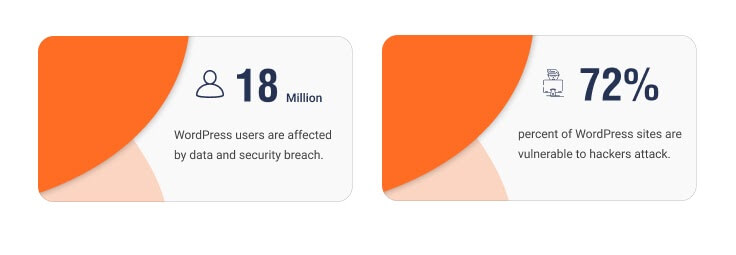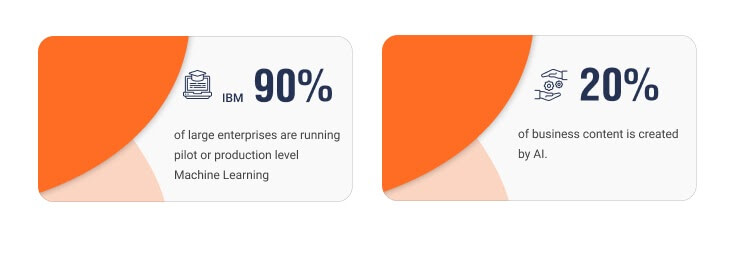The word ‘ Headless CMS ‘ has gained popularity in recent years. However, it is more than just a buzzword. It indeed made an impact on every industry that deals with digital content.
But we often come across the question of what holds the future of the Content Management System and its industry? Will the trend of Headless CMS continue in 2021 and beyond?
No, this is because Headless Content Management is not just a trend. At least, not in our view. It is a shift that empowers businesses and organizations to deliver cutting-edge omnichannel experiences.
It is no surprise that large and reputed companies have adopted Headless CMS for their digital content because they have realized its worth far earlier than others.
They predicted the rise of technologies like Chatbots, Cloud Computing, AI & ML and their impact on the Headless CMS industry.
Furthermore, they knew that an increase in voice activation search, IoT, and the use of smart devices would greatly impact the way of managing the content. This knowledge helped them in making more informed and technically correct decisions.
But still, when it comes to switching to Headless CMS, there are questions and a lot of questions. The ones that get repeated more often than others are about the future of CMS and Headless CMS.
Read on to learn about where the future of Content Management System (CMS) is heading with a few astonishing facts, figures, and statistics. Also, know the market predictions and trends of Headless CMS.
The Global CMS Market and Its Prediction
WordPress may still dominate the CMS market, but growth and shifts in the industry have left openings for tech-savvy players.
- The global CMS market was valued at around USD $62.4 Billion in 2020 and is projected to grow around USD $116.2 Billion by 2025 at a Compound Annual Growth Rate (CAGR) of 13.3%.
- It is also expected to generate around $123.5 Billion by 2026 at a Compound Annual Growth Rate (CAGR) of nearly 17%.
- More than one-third, i.e., 33% Percent of growth, is expected to come from North America.
Let us look at the Web Content Management System (WCMS) market that includes tools for content analytics, editing, and Digital Asset Management (DAM) tools.
- The WCMS industry was valued at $4.8 Billion in 2017 and has grown to USD $6.9 Billion in 2021. It is estimated that WCMS will grow at a Compound Annual Growth Rate (CAGR) of 15.7% percent and hit the mark of USD $14.3 Billion by 2026.
- In this fast-growing content management systems industry, Web Engagement Management (WEM) makes up the highest growing portion.
The three key factors that drive the growth of the CMS industry worldwide are:
- Consumer’s demand for omnichannel experiences.
- Fast-growing digital retail sector.
- Increase in demand for digital marketing solutions.
The dominance of WordPress in the content management system industry:
- In 2018 WordPress used to power 34% percent of all the websites on the internet.
- Today, WordPress itself powers 65.2% percent of the market share of the entire Content Management System industry.
- Whereas Squarespace, the top competitor of WordPress, has a market share of only 2.6% percent.
- Drupal powers 2.2% percent of all websites, while Joomla powers 3.1% percent of all websites on the internet.
The majority of the Headless CMS market consists of content management systems providers with less than 1% percent of the market share. This means there is room for the growth of alternative solution providers.
Importance of CMS: Facts and Figures
A Content Management System is specifically designed for multiple users to manage their content accordingly. It also lets you display your content more easily. With the advancement of technology, Headless CMS can improve security, save cost and resources, make the site more user-friendly, and improve users’ overall experience.
Here are some essential facts why a good content management system is important.
- More than one-third, I.e., 33%+ percent of the marketing budget, is utilized for technology. In that, 28% of the budget is utilized for infrastructures such as Content Management Systems and Web Content Management Systems.
- More than 90% percent of organizations face the challenge of translating their content into multiple languages. Whereas, only 30% percent of organizations integrate their content management system to language service providers or translation management systems.
- 91% percent of users want to resume from where they left off while contacting a customer service representative, and 89% percent of users do not like to repeat themselves.
- There are a lot more facts and figures in Hubspot’s Ultimate List of Marketing Statistics – 2021. This is a worth looking list of statistics for every marketer.
As technology moves forward, Digital publishers are trying to cut down content management and publishing costs. A Digital Asset Management (DAM) system could be the perfect solution for them.
- The average employee spends 20% percent of their time every day looking for the lost files. Whereas the cost to replace the single digital asset can exceed USD $1,000, making the DAM system a cost-saving option.
On the other hand, security remains one of the major consent for Content Management Systems, especially WordPress. It does not mean that other content management systems platforms do not face this issue. But as a most reputed CMS, WordPress has the worst concerning statistics when it comes to breaches.
- The platform’s worst security and data breach affected more than 18 Million WordPress users.
- According to statistics, more than 72% percent of WordPress sites are vulnerable to hackers attack.
- Here are a lot more WordPress security-related facts and figures in Kinsta’s data report that one should look for.
Future Trends and Statistics of CMS
Do you want to know what changes can be expected in the Content Management System industry? AI, Chatbots, and Voice Search are the top future content management systems trends to keep an eye on.
Increase in Demand for AI in CMS
The era of drag & drop and WYSIWYG (What You See Is What You Get) editor vanishes out, and AI is taking over it. Modern-day content management systems such as WIX use Artificial Design Intelligence to make web designing easier for users. Not only this, but now users can create animations and clone a website easier with AI.
- As per CMSWire, AI is very helpful in content management systems by designing sites, generating the content, speeding up the testing, and giving feedback to improve content. There are more than 12 ways in which AI has changed content management.
- As per IBM, 90% of large enterprises are running pilot or production level Machine Learning (ML) applications.
- Here are the other important AI facts and statistics that you need to know in 2021.
Growth in Voice-Based Search Optimization
Voice-Based Search was introduced in 2007. At that time, most Content Management Systems did not take it into consideration and ignored it. This is because the majority of CMS systems offer traditional SEO features as ‘typed’ search.
However, the voice search industry is growing faster and is worth paying more attention to, especially after the AI-based devices like Siri and Alexa.
- So far, consumers have spent more than $2 Billion through voice search during online shopping.
- Voice-Based online shopping is expected to cross $40 Billion by the end of 2022.
- According to Nasdaq’s online shopping and E-commerce statistics, more than 95% Percent of shopping will be done online.
The Growth of Chatbots in Content Management
The chatbot is one of the growing trends on which content management systems providers should keep an eye. The way a content management system manages its content, it can get a great benefit from the chatbot.
- As per L.inchpin’s report, 80% of the business will be integrated with chatbots by the end of 2021.
- By the end of 2021, an average person will have more conversations with chatbots than their spouse.
- Here is what the official chatbot website says about the chatbot statistics to follow in 2021.
Headless CMS: The Future of CMS Industry
The goal of Content Management Systems has always been to make content management easier without dealing with the coding. However, when we look at the content-driven business and organizations, one can quickly notice the shift towards the headless CMS.
Such a rapid shift is the increasing channels of content and the rise of different content marketing strategies. So headless is the best option when it comes to adjusting to rapidly diversifying content consumption landscapes.
- Headless CMS adoption is double than it was in 2018. Here are the Headless CMS market 2018 predictions that came true.
- 86% percent of the people feel highly optimistic about the Headless CMS.
- Whereas, ⅔ of the people that use Headless CMS, I.e., 66% percent of people love Headless CMS.
- When switched to Headless CMS, 35% percent of marketers have felt better user experience, and 43% think they are less reliant on IT.
- Last but not least, According to BusinessWire’s latest report, the Headless CMS market was valued at around USD $328.5 Million in 2019, and the experts have projected it to reach USD $1628.6 Million by 2027.
- The minimum growth rate of the market is predicted at a CAGR of 22.6% from 2020 to 2027.
The adoption of Headless CMS is faster and easier than expected. As a result, Headless CMS is definitely the future of Content Management Systems and the Content Management Industry.
Conclusion
These are just a few CMS statistics and trends that currently influence organizations and content publishers to use content management systems in upcoming years.
As internet users and publishers increase, CMSes will become more user-friendly and less code reliant. However, any CMS you choose must be able to adapt to the new technology. The content management systems that can do this well and adjust to the latest technology is none other than Headless CMS. As a result, there will be a massive shift from the traditional and WordPress systems to Headless CMS.
Learn more about the different aspects and factors of the Headless CMS industry in The Complete Guide To Headless CMS.
COMMENT
No Comments found.
DETAILED INDUSTRY GUIDES
Software Development - Step by step guide for 2021 and
beyond | OpenXcell
Learn everything about Software Development, its types, methodologies, process outsourcing with our complete guide to software development.
Headless CMS - The complete guide for 2021 | OpenXcell
Learn everything about Headless CMS along with CMS, its types, pros & cons as well as use cases, and real-life examples in a complete guide.
Mobile App Development - Step by step guide for 2021 and beyond | OpenXcell
Building your perfect app requires planning and effort. This guide is a compilation of best mobile app development resources across the web.
DevOps - A complete roadmap for software transformation | OpenXcell
What is DevOps? A combination of cultural philosophy, practices, and tools that integrate and automate between software development and the IT operations team.
GET QUOTE
INSIGHTS INTO TECH
The inception of ChatGPT in 2022 marked the wide-scale adoption of Artificial Intelligence in application development. In the field of creating mobile apps, AI-powered tools and frameworks have become indispensable…
Read more...
Introduction Most industries have turned to AI to stay ahead of the competition in the evolving tech landscape. The construction industry is no stranger to this trend. The advent of…
Read more...
Introduction Digital transformation needs no introduction; it is evolving as a norm in many industries. The paradigm transition it brings to the retail landscape is evident from the latest predictions.…
Read more...















